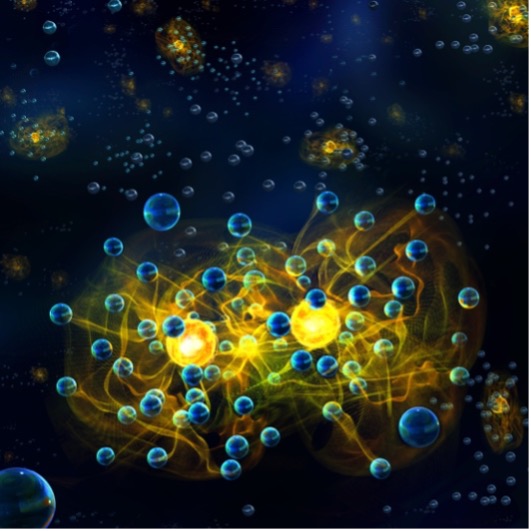New article in Nature Physics
Georg Bruun just published a new article in Nature Physics titled: Interacting polarons

Quasiparticles offer a powerful description of complex quantum mechanical processes in nature. Using the flexibility of ultracold quantum gases, these quasiparticles can be created and studied in detail. Now, an experimental team collaborating with a theory team led by Georg M. Bruun have for the first time been able to observe how Fermi polarons – a special type of quasiparticle – interact with each other. Their findings have been published in Nature Physics.
An electron moving through a solid generates a polarization in its surroundings due to its electric charge. This leads to the formation of a quasiparticle consisting of the electron surrounded by a cloud of polarized environment. Russian physicist Lev Landau extended the concept of quasiparticles to provide a general description of otherwise prohibitively complex many-body systems, which stands out as one of the highlights in quantum physics. Our understanding of individual quasiparticles has improved dramatically in recent years due to quantum simulation experiments using cold atomic gases. In these experiments, the quasiparticle, named a polaron, is made from an atom interacting with a quantum degenerate cloud of atoms of a different kind.
Now, an experimental-theoretical team from Austria, Spain, Mexico, and Denmark (Georg M. Bruun) have been able to create several such polarons simultaneously in a quantum gas and observe their interactions with each other. This interaction, which hitherto had remained elusive, is an inherent and important property of quasiparticles that leads to a range of important phenomena including sound propagation, superconductivity, and transport. Naively, one would think that polarons always attract each other, but the new results demonstrate that due to quantum effects, bosonic polarons attract whereas fermionic polarons repel. The good agreement between experiment and theory enabled the team to provide a precise interpretation of their observations, which gives excellent opportunities to study the very fundamental mechanisms of nature.
Publication:
Mediated interactions between Fermi polarons and the role of impurity quantum statistics. Cosetta Baroni, Bo Huang, Isabella Fritsche, Erich Dobler, Gregor Anich, Emil Kirilov, Rudolf Grimm, Miguel A. Bastarrachea-Magnani, Pietro Massignan, Georg Bruun. Nature Physics: www.nature.com/articles/s41567-023-02248-4
https://arxiv.org/abs/2305.04915
